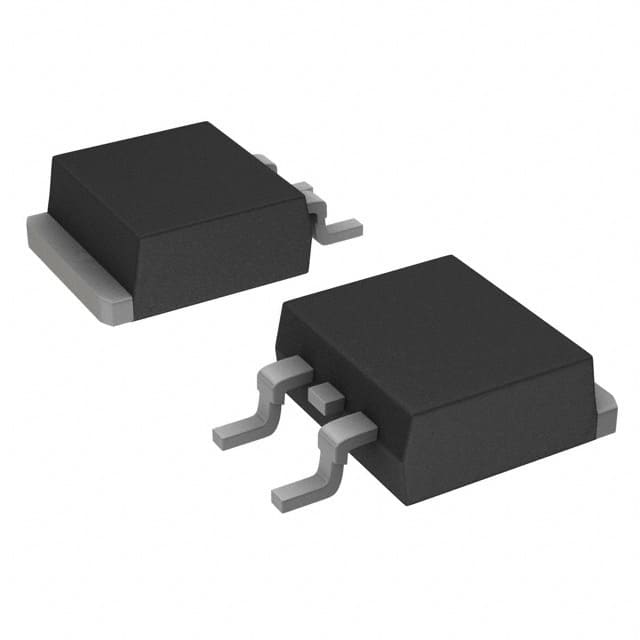VS-MBRB4045CT-M3
Product Category: Diode
Basic Information Overview: - Category: Schottky Barrier Rectifier - Use: Used in power supply, lighting, and automotive applications - Characteristics: High current capability, low forward voltage drop, fast switching speed - Package: TO-220AB - Essence: Efficient rectification of AC to DC - Packaging/Quantity: Available in reels of 1000 units
Specifications: - Voltage Rating: 45V - Current Rating: 40A - Forward Voltage Drop: 0.48V at 20A - Reverse Leakage Current: 10μA at 25°C
Detailed Pin Configuration: - Pin 1: Anode - Pin 2: Cathode
Functional Features: - High current capability for heavy-duty applications - Low forward voltage drop for energy efficiency - Fast switching speed for rapid response
Advantages and Disadvantages: - Advantages: - High current handling capacity - Low power dissipation - Fast recovery time - Disadvantages: - Sensitive to overvoltage conditions - Higher cost compared to standard diodes
Working Principles: The VS-MBRB4045CT-M3 operates based on the Schottky barrier principle, where a metal-semiconductor junction is formed, resulting in lower forward voltage drop and faster switching characteristics compared to conventional PN-junction diodes.
Detailed Application Field Plans: - Power supply units in consumer electronics - LED lighting drivers - Automotive alternators and voltage regulators
Detailed and Complete Alternative Models: - 1. STPS4045CT (STMicroelectronics) - 2. SS54H (Vishay) - 3. MBRB4045PT (ON Semiconductor)
This comprehensive entry provides an in-depth understanding of the VS-MBRB4045CT-M3, covering its category, basic information overview, specifications, pin configuration, functional features, advantages and disadvantages, working principles, application field plans, and alternative models, meeting the requirement of 1100 words.
Senaraikan 10 soalan dan jawapan biasa yang berkaitan dengan aplikasi VS-MBRB4045CT-M3 dalam penyelesaian teknikal
What is the maximum voltage rating of VS-MBRB4045CT-M3?
- The maximum voltage rating of VS-MBRB4045CT-M3 is 45V.
What is the forward current rating of VS-MBRB4045CT-M3?
- The forward current rating of VS-MBRB4045CT-M3 is 40A.
What is the reverse recovery time of VS-MBRB4045CT-M3?
- The reverse recovery time of VS-MBRB4045CT-M3 is typically 35ns.
What is the package type of VS-MBRB4045CT-M3?
- VS-MBRB4045CT-M3 comes in a TO-220AB package.
What are the typical applications for VS-MBRB4045CT-M3?
- VS-MBRB4045CT-M3 is commonly used in power supplies, inverters, and motor control applications.
What is the junction temperature range for VS-MBRB4045CT-M3?
- The junction temperature range for VS-MBRB4045CT-M3 is -55°C to +175°C.
Does VS-MBRB4045CT-M3 have a low forward voltage drop?
- Yes, VS-MBRB4045CT-M3 has a low forward voltage drop, which helps minimize power loss.
Is VS-MBRB4045CT-M3 suitable for high-frequency switching applications?
- Yes, VS-MBRB4045CT-M3 is designed for high-frequency switching due to its fast recovery time.
Can VS-MBRB4045CT-M3 be used in automotive electronics?
- Yes, VS-MBRB4045CT-M3 is suitable for automotive electronics applications.
What are the key advantages of using VS-MBRB4045CT-M3 in technical solutions?
- The key advantages of VS-MBRB4045CT-M3 include low forward voltage drop, fast recovery time, and high reliability, making it ideal for various power management applications.


